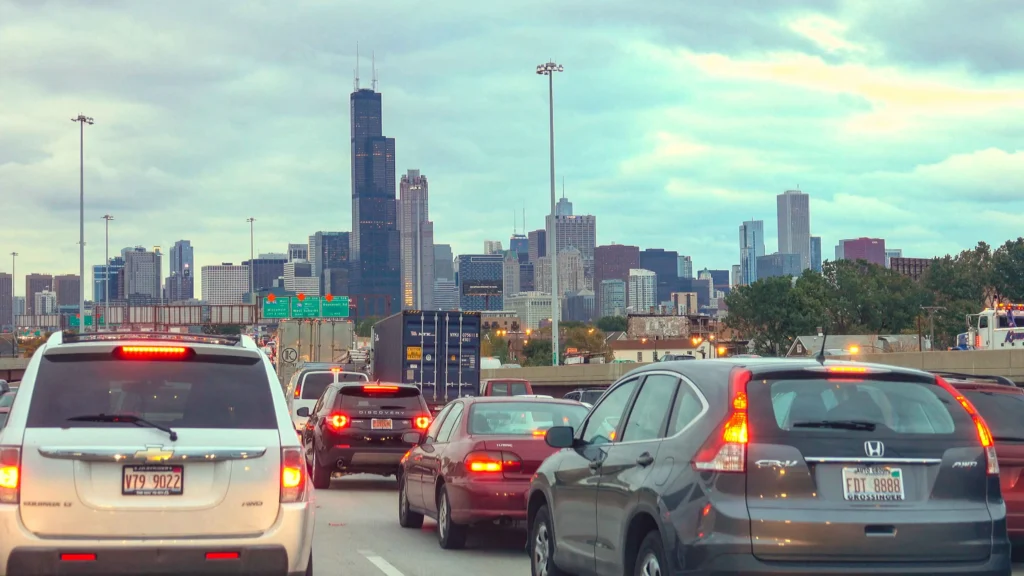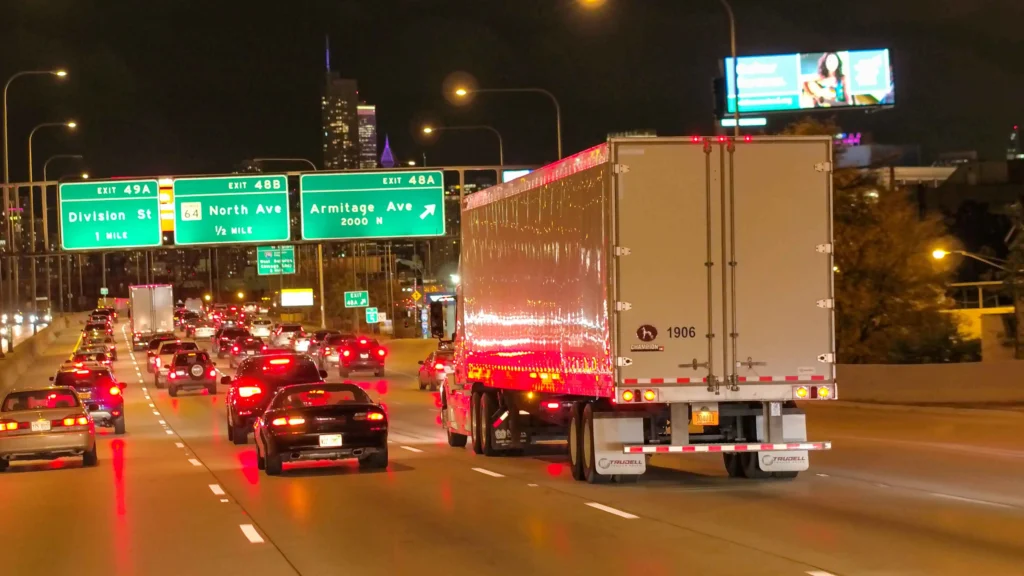What is a multi-car crash?
Motor Vehicles Accidents - March 10, 2025
Multi-car crashes can cause severe injuries and damage to your vehicle, leaving you wondering who is at fault. Determining all the liable parties requires help from an experienced Chicago car accident attorney.
At Horwitz, Horwitz & Associates, we are trial lawyers committed to justice. When you or a loved one needs an accomplished Chicago multi-car crash attorney, contact us to learn more about how we can help your case.

Understanding a multi-car crash in Chicago
A multi-car crash is simply how it sounds: a vehicle collision involving multiple cars, typically three or more. It’s also referred to as a “pile-up,” especially if five or more vehicles are involved.
Understanding the dangers of multi-car accidents
In a typical one or two-vehicle accident, there’s usually just one point of impact. Some people are fortunate enough to be protected by “crumple zones” or airbags that deploy at the impact point. However, in a multi-car crash, victims in the middle cars may be impacted from the front, back, and sides. The victims in the first car could also be subjected to repeated collision force from behind.
Types of multi-car accidents
An initial two-car accident can quickly lead to a multi-vehicle collision if the cars nearby don’t react in time or are otherwise unable to avoid it.
Head-on collision
When a head-on collision occurs, multiple lanes of traffic are blocked, and drivers on either side may not be able to react in time. The initial head-on collision victims can be hit from the front and rear, causing multiple serious injuries.
Side-impact collision
Sideswipe accidents usually happen when one car improperly changes lanes or drifts into another lane. One car may sideswipe another, sending it careening into other lanes of traffic.
Rear-end collision
Chain-reaction rear-ending accidents start with one vehicle hitting another from behind, which pushes that vehicle into the one in front of it. Cars behind the rear car may be unable to avoid the pile-up in time and end up rear-ending that car.
Pile-up collision
Pile-up collisions involve five or more vehicles, with cars piled up to the front, back, or sides of the initial crash site.
Common causes and contributing factors of pileup accidents
There are many factors that can lead to multi-car pileup accidents in the Chicagoland area, including the following.
Blocked line of sight
If a driver cannot see the road in front of them, like when stuck behind a larger vehicle, they may not be able to see a wreck in front of them. This can be especially dangerous if the smaller car collides with a semi-truck, as it could get wedged beneath it.
Road hazards
A large pothole, broken pavement, or a spill from a cargo truck can create a road hazard that causes a car to hit another one. Or, a car swerving to avoid a road hazard can hit another vehicle, starting a chain-reaction collision.
Adverse weather conditions
Rain, sleet, snow, ice, and heavy winds can make roads difficult to navigate, setting the scene for a big pileup.
Distracted driving
Distracted drivers paying attention to cell phones, other passengers, eating, or other activities are less focused on the road, leading to disastrous accidents.
Tailgating and insufficient stopping distance
Tailgating is a common factor in multi-car accidents. Without enough stopping distance, one driver can start a chain reaction, injuring dozens of others.
Vehicle malfunctions or defects
Faulty vehicles or malfunctioning components, such as brake systems, could be the ultimate factor that caused the crash.
Highways and rush-hour traffic
When thousands of people are driving in heavy traffic, one mistake can cause a pileup crash on Chicago highways.
Why are multi-car crashes so complicated?
Multi-car accidents require understanding the first impact and all the following collisions to establish who acted negligently.
Liability
Proving liability in a multi-car pile-up becomes complicated because more than one driver may be liable. The at-fault party in the initial collision often shoulders the largest portion of liability, but other cars involved in the crash may also be liable for part of the damage.
For example, if one car was tailgating and was too close to avoid hitting the initial crashed cars, then they may be liable, too. Or, if a cargo truck spills liquids or other objects in transit, it could be liable for creating a road hazard even if the truck itself isn’t involved in the wreck.
Your Chicago multi-car crash attorney may need to conduct a deeper investigation into the crash than they would for a two-driver collision. This requires more extensive resources, which not every law firm may have.
If you contributed no fault to the crash or a small amount, you may be able to name multiple defendants in your car crash suit.
Insurance companies
Each driver or contributor to a multi-car crash should be represented by their own insurance company. This means that your attorney will negotiate with each insurance company for a settlement.
One party’s insurance company may offer a fast settlement if it’s clear that their client caused the initial crash. However, be wary when signing a settlement letter, and always have your Chicago multi-car crash attorney review it to ensure that the settlement only releases that party of liability and not all parties involved.
Your lawyer may have a tougher time negotiating a settlement with a car that couldn’t avoid hitting the initial wreck, for example, or proving that the party that caused the road hazard is responsible for the crash (like the cargo truck with a spill mentioned above).
Comparative vs. contributory negligence
Proving contributory negligence (how much each party’s negligence contributed to the accident) is the crux of a car accident suit, and it’s your lawyer’s job to assign negligence to each party involved.
Liability often rests with multiple parties under the legal principle of comparative negligence. One driver may be 35% responsible for the accident, while another could be 50% responsible. You, the victim, may have a small portion of the blame, say 15%.
Illinois car accident laws are based on a modified comparative negligence system, which means that the plaintiff’s settlement is reduced by the amount they contributed to the accident. Using the example above, your settlement may be reduced by 15%. However, if you contribute more than 50% of the fault to the accident, then you are ineligible to collect damages.
Our Chicago multi-car crash attorneys are here to help
We know you need compassionate and experienced help from a Chicago multi-car crash attorney to manage the legal burden of your case. Contact us for a free consultation online or by calling (800) 985-1819.



